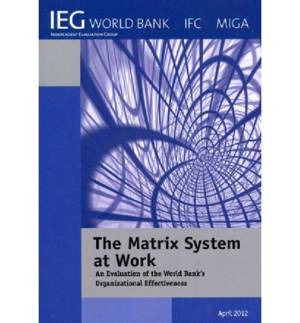
- Retrait gratuit dans votre magasin Club
- 7.000.000 titres dans notre catalogue
- Payer en toute sécurité
- Toujours un magasin près de chez vous
- Retrait gratuit dans votre magasin Club
- 7.000.0000 titres dans notre catalogue
- Payer en toute sécurité
- Toujours un magasin près de chez vous
The Matrix System at Work
An Evaluation of the World Bank's Organizational Effectiveness
World Bank Publications, The World Bank
50,95 €
+ 101 points
Description
The 1997 Bank reforms that introduced the matrix management concept aimed to adapt the organization to changing circumstances and address concerns among external stakeholders about the role of aid in development. The reforms were motivated largely by widespread recognition that the Bank's development programs were excessively driven by a culture of lending, with insufficient attention to client needs and the quality of results, which are crucial to development effectiveness. A previous round of reforms in 1987 had strengthened the country focus, but quality remained a concern.
Spécifications
Parties prenantes
- Auteur(s) :
- Editeur:
Contenu
- Nombre de pages :
- 264
- Langue:
- Anglais
- Collection :
Caractéristiques
- EAN:
- 9780821397152
- Date de parution :
- 30-07-12
- Format:
- Livre broché
- Format numérique:
- Trade paperback (VS)
- Dimensions :
- 178 mm x 254 mm
- Poids :
- 535 g

Les avis
Nous publions uniquement les avis qui respectent les conditions requises. Consultez nos conditions pour les avis.






